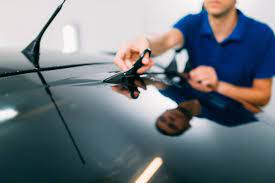In the ever-evolving world of automotive and building www.brooklynwindowtinting.com enhancements, window tinting stands out as a versatile and practical solution. While the concept of window tinting might seem straightforward—applying a film to glass surfaces—its applications, benefits, and technological advancements are anything but simple. Let’s delve into the multifaceted world of window tinting, exploring its advantages, the latest innovations, and its impact on both vehicles and buildings.
The Fundamentals of Window Tinting
Window tinting involves applying a thin film or coating to glass surfaces to reduce the amount of sunlight that passes through. This film can be made from a variety of materials, including polyester, ceramic, and metal, each offering different levels of light filtration, heat rejection, and privacy.
Benefits of Window Tinting
- Enhanced Privacy and Security: One of the most noticeable benefits of window tinting is increased privacy. Tinted windows make it more difficult for outsiders to see inside, which can be particularly valuable for homes and businesses. Additionally, the film can add a layer of shatter resistance, helping to protect against break-ins.
- Improved Comfort and Energy Efficiency: Window tinting significantly reduces heat buildup within a vehicle or building by blocking a substantial portion of solar radiation. This leads to more consistent indoor temperatures and can reduce the reliance on air conditioning systems, leading to lower energy bills.
- UV Protection: Prolonged exposure to ultraviolet (UV) rays can cause skin damage and contribute to the fading of interior furnishings. High-quality window tints can block up to 99% of UV rays, offering protection for both occupants and belongings.
- Glare Reduction: For drivers, glare from the sun can be a significant safety hazard. Tinted windows help minimize glare, improving visibility and reducing eye strain.
Technological Advancements in Window Tinting
The field of window tinting has seen remarkable advancements over recent years, driven by technological innovation and evolving consumer needs.
- Ceramic Tints: One of the most advanced types of window films, ceramic tints use ceramic particles to block heat and UV rays while maintaining excellent visibility. Unlike traditional tints, they do not interfere with electronic signals, making them ideal for modern vehicles equipped with GPS and satellite radio.
- Photochromic Films: These films adjust their tint level based on the amount of sunlight they are exposed to. In bright conditions, they darken to reduce glare, while in lower light conditions, they become clearer. This dynamic adjustment ensures optimal visibility and comfort throughout the day.
- Smart Tint Technology: The future of window tinting may lie in smart technology. Electrochromic films can change their tint electronically, offering on-demand control over light and privacy. This innovation allows users to adjust the tint of their windows with a simple touch or voice command.
Environmental and Aesthetic Considerations
In addition to practical benefits, window tinting also has environmental and aesthetic implications. By reducing the heat absorbed by buildings and vehicles, tinted windows contribute to energy conservation efforts. Aesthetically, tinted windows can enhance the look of a car or building, providing a sleek, modern appearance.
Conclusion
Window tinting is more than just a cosmetic upgrade—it’s a functional enhancement with a broad range of benefits. From improving privacy and energy efficiency to embracing cutting-edge technologies, window tinting continues to evolve, offering smarter solutions for modern living. Whether for a vehicle or a building, investing in high-quality window tinting can be a wise decision, combining style with practical advantages.

